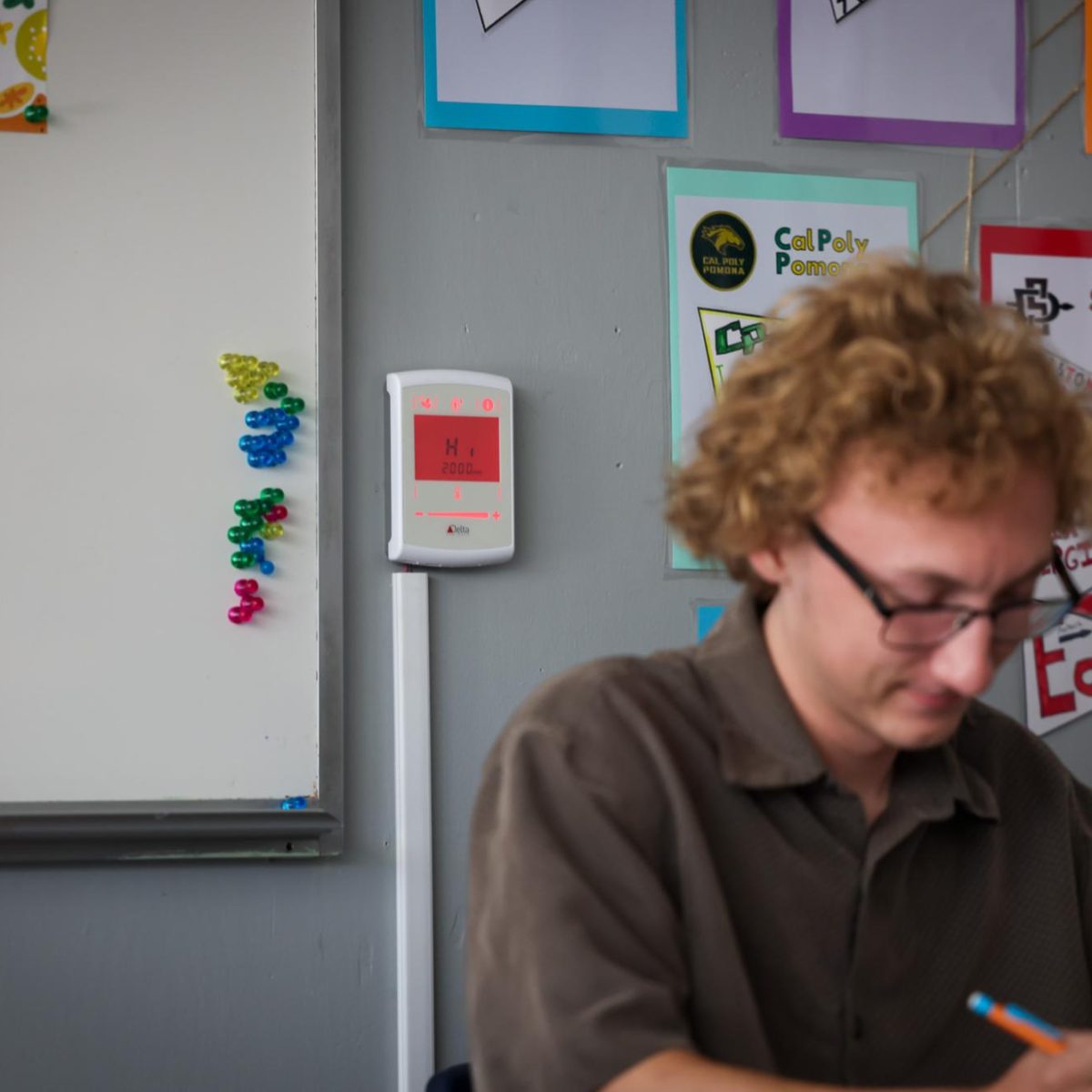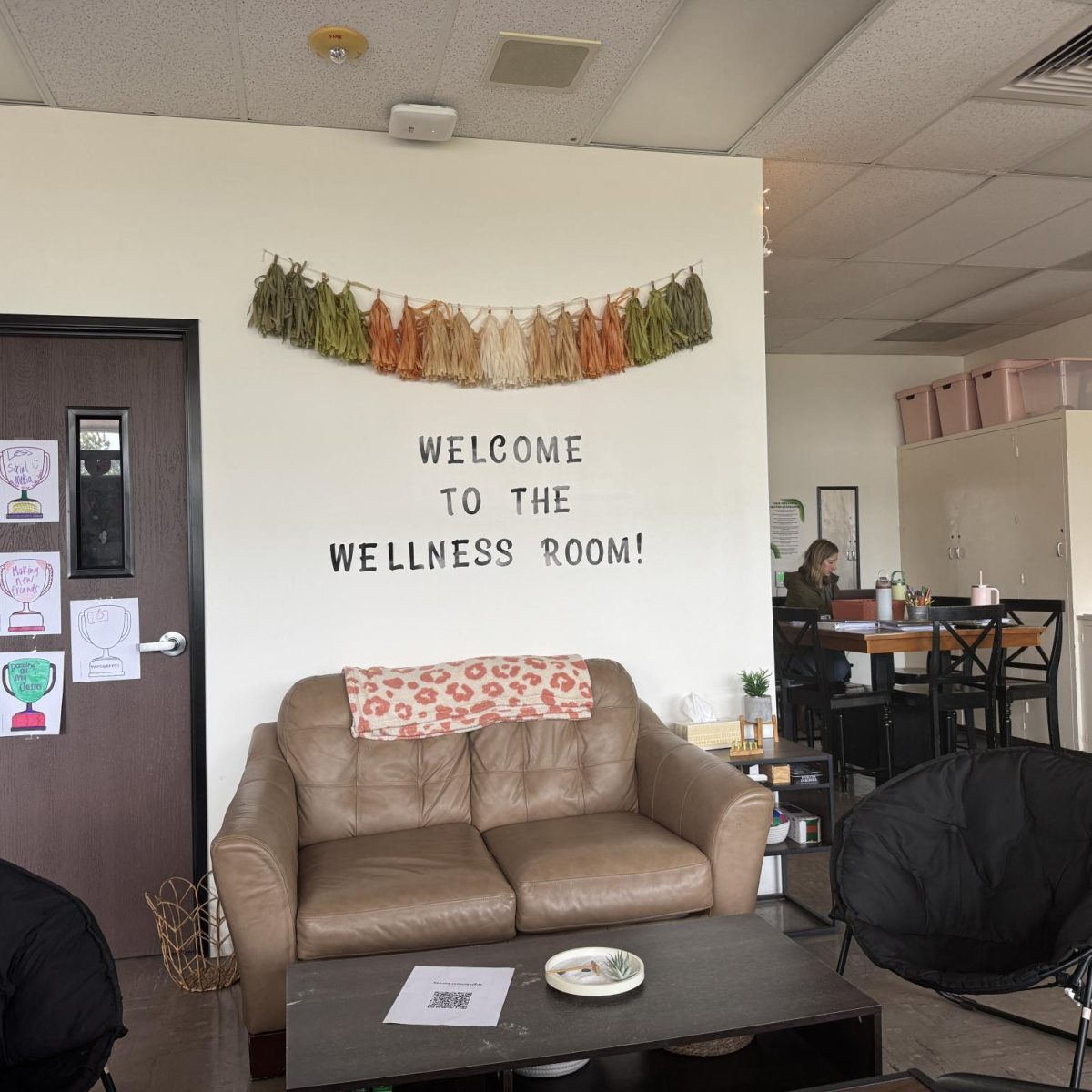THOUSAND OAKS, Calif. – This past summer, carbon dioxide monitors were installed in all distinct classrooms including those at Thousand Oaks High School.
If you were to ask several students or even staff members within the Conejo Valley Unified School District if they knew about the excessive amounts of carbon dioxide molecules floating around in each classroom, most would probably say they had no idea. When there is too much carbon dioxide in the environment, it can eventually build up in the lungs and cause Hypercapnia.
This syndrome can be chronic and have long-term effects including shortness of breath and daytime fatigue. Students often talk about the negative effects of “school air” but they are actually referring to the results of Hypercapnia.
In 2022, CVUSD received a $2.9 million grant from the California Schools Healthy Air, Plumbing, and Efficiency (CalSHAPE) Program, to improve school heating, ventilation, and air conditioning systems. Under this program, schools are required to install carbon dioxide monitoring devices near the rooms’ HVAC thermostats.
District-wide 1,163 monitors were installed, and Thousand Oaks High School took on this project to improve students’ learning environments and well-being this past summer.
“Since all classrooms are on a common condenser system, there can be times when several classrooms are at the same temperature. The new carbon dioxide monitors can only give you a reading of current CO2 levels and are not adjustable. There are no controls on the monitor to operate it. The buttons displayed are used initially to program the units,” said CVUSD Director of Safety and Risk Management Gary Bradbury.
These new monitors light up to one of three colors based on the CO2 levels measured in the room and the digital reading in parts per million (ppm). A green light indicates below 1000 ppm and is considered to be healthy CO2 concentration levels. A yellow light indicates the level is between 1000 ppm and 1500 ppm. When a yellow light is present it is still safe for students and staff to continue working, however, this condition may result in slight fatigue. A red light indicates over 1500 ppm, and teachers or staff should notify the Maintenance Department to evaluate the performance of the ventilation system.
“C02 ppm measurements usually directly correlate to the size of the classroom, number of students, and whether the HVAC system is running. Location of the monitor is adjacent or near the thermostat for power, and under a return air duct is optimal where the C02 ppm is most representative of actual conditions,” said Bradbury.
Now that these monitors have been installed, it increases students’ and staff’s awareness of this issue, when before it wasn’t a known problem. Most teachers in CVUSD have been teaching for years and have never heard about the excessive amounts of CO2 floating around in their classrooms.
Even though carbon dioxide levels above 1000 ppm and under 5000 ppm are not health and safety emergencies, staff should still take action and follow these steps to ensure the best environment possible. First, staff is advised to turn on the HVAC system, and open the doors/windows to circulate more airflow throughout the room.
During any breaks, it is recommended to keep doors open to decrease the accumulated levels of CO2. Finally, placing a fan in front of an open door facing a classroom can provide more fresh air as well.
“If CO2 is building up, in a classroom and we realize the air system is on but CO2 levels are rising we obviously have to make adjustments,” said principal Dr. Bergmann. “Once doors are open and windows are open, the amount of air we are pumping to classrooms should dissipate relatively quickly. So if it’s not, it gives us the information to be able to go back and start making adjustments.”








